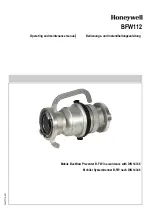
Functions
2.3 Directional Overcurrent Protection 67, 67N
SIPROTEC, 7SJ62/64, Manual
C53000-G1140-C207-2, Release date 01.2008
107
The rotated reference voltage defines the forward and reverse area, see Figure 2-28. The forward area is a
range of
±
86° around the rotated reference voltage V
ref,rot
If the vector of the fault current is in this area, the
device detects forward direction. In the mirrored area, the device detects reverse direction. In the intermediate
area, the direction result is undefined.
Figure 2-28
Forward characteristic of the directional function, directional phase element
Direction Determination of Directional Ground Element with Ground Values
Figure 2-29 shows the treatment of the reference voltage for the directional ground element, also based on a
single-pole ground fault in Phase A. Contrary to the directional phase elements, which work with the unfaulted
voltage as reference voltage, the fault voltage itself is the reference voltage for the directional ground element.
Depending on the connection of the voltage transformer, this is the voltage 3V
0
(as shown in Figure 2-29) or
V
N
. The fault current -3
I
0
is phase offset by 180° to the fault current
I
scA
and follows the fault voltage 3V
0
by
fault angle
ϕ
sc
. The reference voltage is rotated through the setting value
1619
ROTATION ANGLE
. In this case,
a rotation of -45°.
Figure 2-29
Rotation of the reference voltage, directional ground element with zero sequence values
The forward area is also a range of
±
86° around the rotated reference voltage V
ref, rot
. If the vector of the fault
current -3
I
0
(or
I
N
) is in this area, the device detects forward direction.
www
. ElectricalPartManuals
. com
















































